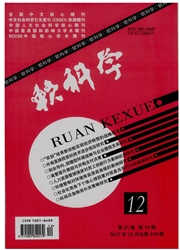

 中文摘要:
中文摘要:
从工业生产和环境保护两阶段视角,考虑非期望中间产出在两个子阶段的转化情况,创新性地构建具有非期望中间产出的中国省际生态效率评价指标体系,运用非期望中间产出网络DEA模型对我国30个省份2009~2014年的生态效率进行分析。研究表明:中国全局及阶段生态效率整体偏低,考察期内全局生态效率均有效的省份仅占13.3%,省际间生态效率差异比较明显;中国生态效率空间格局与经济空间格局类似,阶段生态效率呈现由东部地区向中西部内陆阶梯式递减的趋势;全国总体、东部、中部以及西部地区全局生态效率不存在明显的收敛特征,省际间生态效率差距在不断扩大。
 英文摘要:
英文摘要:
Considering the transformation of undesirable intermediate outputs,this paper constructs an eco-efficiency evaluation system from two-stage perspective,and employs undesirable two-stage network DEA model to evaluate the eco-efficiency of 30 provinces in China during 2009 ~ 2014. Results show that the overall and sub-stage eco-efficiency of China is relatively low,there are only 13.3% of the overall eco-efficiency are effective across the country,and showing significant differences among provinces. The eco-efficiency spatial pattern is similar with economic,and the sub-stage eco-efficiency appears a staged decline from eastern to central and western inland regions. The overall efficiency of the country and three main regions does not present convergence feature obviously,and the gap between the eco-efficiency of different provinces is broadening.
 同期刊论文项目
同期刊论文项目
 同项目期刊论文
同项目期刊论文
 期刊信息
期刊信息
